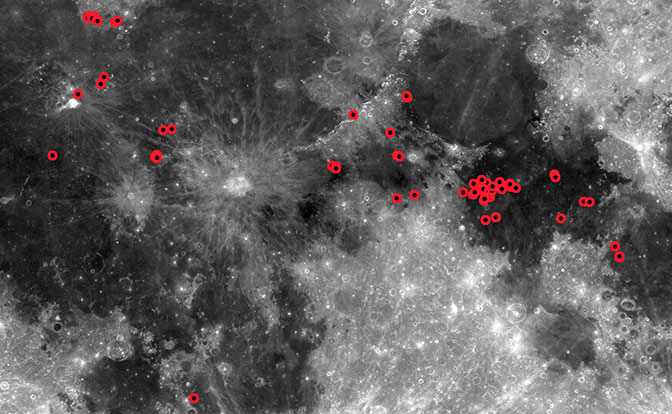
Once upon a time our moon had an atmosphere made of Volcano smoke: Study suggests
That big bright rock that we look at every night from our window has always been perceived as a world of desolation and utter grandeur which is only bothered now and then with an impact from a meteorite or any rare terrestrial spacecraft landing from the vicinity of Earth. A Recent study into the history of this lunar surface has revealed startling discoveries that I sure to change the perception moon for the scientists. The moon as we know now might have looked very different about 3 or 4 billion years ago.
After being formed around 4.5 billion years ago, the pre-historic moon was still cooling and geologically active. Large-scale volcanic eruptions caused the massive basin on the surface to be filled up forming seas which is the darker regions that we can see with our naked eyes over the surface of the moon. According to Debra Needham, author of the study from NASA Marshall Space Flight Center, the terrains of the moon would have looked something like a sea of molten lava with patches of darker cooling rocks here and there with fractured crusts on top of the lava which was exposed to the developing atmosphere. The atmosphere was most likely to have a brownish yellowish haze pertaining to the high sulfur concentration which could have been easily visible from Earth.
Lunar missions such as the GRAIL, LRO, and the Moon Mineralogy Mapper obtained updated measurements of the extension and depth of the seas of the moon in past which helped determine the volume of lava released during the eruptions. After combining this information with laboratory analysis of the lunar rocks collected during the Apollo missions, the researchers were able to estimate the amount of gas that had leaked into the atmosphere.
Needham found that during the sea-forming eruptions, a huge amount of gas should have been released. During the peak of the volcanic activity on the lunar surface which was roughly 3.5 billion years ago, the lunar atmosphere could have been up to 1.5 times as thick as present-day Martian atmosphere. The surface pressure over the moon during that time has been estimated to be around 0.01 atmospheres or about 1% of the Earth’s atmospheric pressure at the sea level.
It has been estimated that these conditions might have lasted up to 70 million years. As time passed and the moon’s interior cooled down decreasing the volcanic activities, the lunar surface stopped churning out gases. The atmosphere was lost into the space a the low gravity over the moon wasn’t able to hold onto it.
Needham and colleague David Kring (USRA) also estimated that a big fraction of the moon’s atmosphere might have been water and the volcanoes could have released up to twice the volume of water in the Lake Tahoe but all that would have been lost to the space but some of it might have survived, especially around the poles. This doesn’t mean that there is more water on the lunar surface than earlier estimated as scientists are already aware that there are some hydrogen-rich deposits in the shadowed regions closer to the lunar poles.This helps paint a picture of how our moon’s atmosphere evolved over time.


